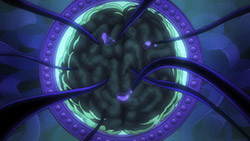 |
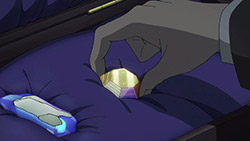 |
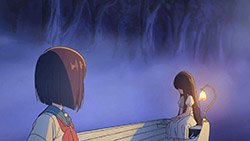 |
 |
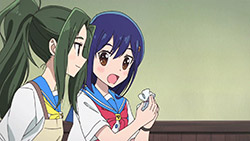 |
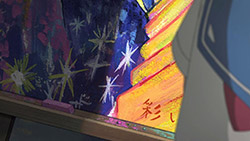 |
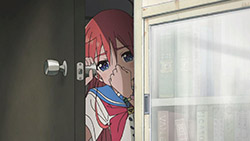 |
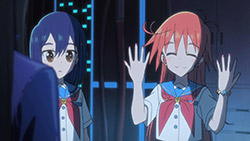 |
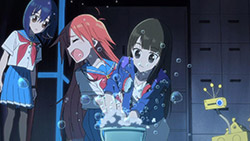 |
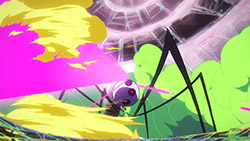 |
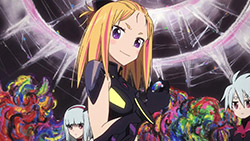 |
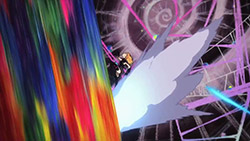 |
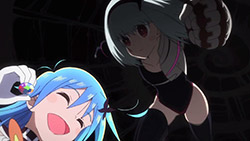 |
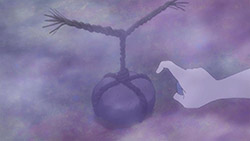 |
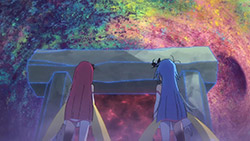 |
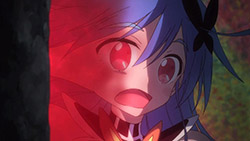 |
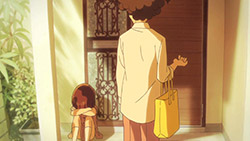 |
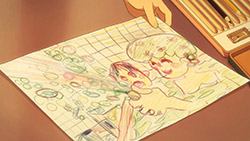 |
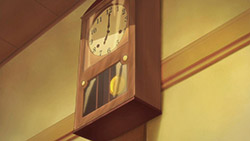 |
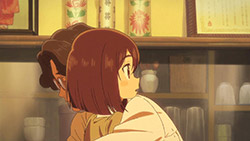 |
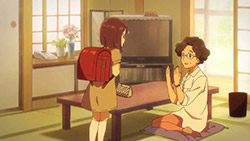 |
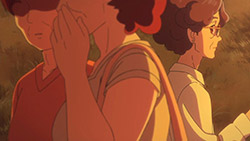 |
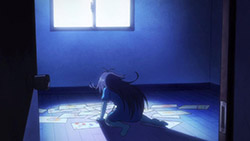 |
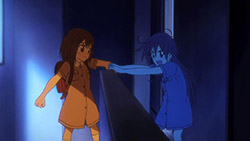 |
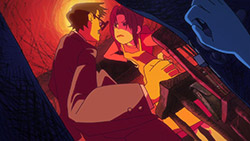 |
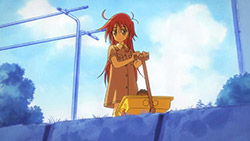 |
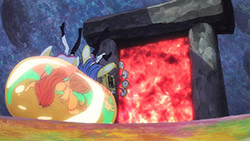 |
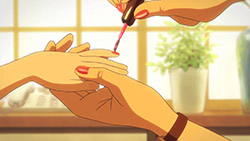 |
 |
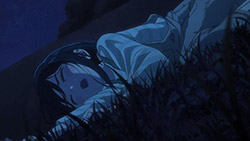 |
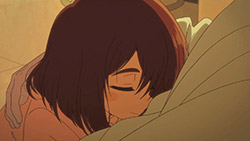 |
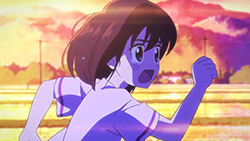 |
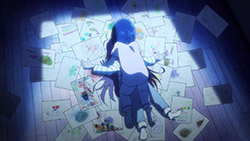 |
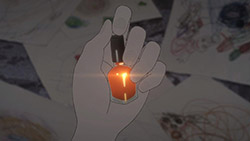 |
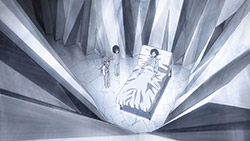 |
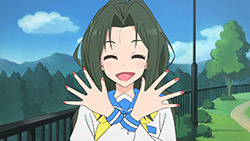 |
「ピュアプレイ」 (Pyuapurei )
“Pure Play”
Whatever one might say about Flip Flappers, one thing’s for sure: it oozes artistry. The concept art and background art are stunning, to be sure, but many shows have that; what pushes Flip Flappers one step further is how much it invests into its style. Sure, it’s also a bit self-indulgent at times (like in this episode, about a budding artist with family issues who’s isolated for being ‘strange’; I hope we’re not being autobiographical here), but not to the point of pretentiousness, at least. I haven’t looked too deeply into the full team behind Flip Flappers, but I can imagine a bunch of animators tired of churning out the same old, and going into Flip Flappers with the intention of really cutting loose.
Art directors gone wild has always been the underlying theme of Flip Flappers, so why make a point of it now? Mostly because I think that now we have gotten over the initial shock factor of Flip Flappers, everybody is more comfortable with the general tenor of the show, and Flip Flappers is steadily using its stylistic tools more in its storytelling. Before, Flip Flappers was more episodic adventures that didn’t really feel much need to have an overt narrative outside of the ‘collect the shards/world domination/yada yada’ thing. Its stylistic flairs were mostly for atmosphere, or as parts of a loose theme. That stuff was great, of course, but now, quite suddenly, we have an honest-to-goodness piece of backstory, about a girl who doesn’t understand dementia. That is not an especially extravagant plot, but its power is in the telling. Very few shows other than Flip Flappers could so easily dip into Expressionism to show a child’s emotional state, or so blatantly colour-code the entire episode. And perhaps we should wonder why that is, because as I’ve touched upon lightly before, anime doesn’t need to ever confine itself to reality. So yeah, go all out with the blue and orange juxtaposition. You’ve already got blue hair. What’s stopping you from doing blue everything?
Of course, I’m only this enthusiastic about anime boldly stepping out of its comfort zone because, here, it works. I do believe that Flip Flappers is getting better as it goes, and here in Pure Pay we can really see it coming together.
The most important thing about this episode to me, though, is that Flip Flappers has proven that it can be engaging not just visually, but also emotionally. Before the season began we could have perhaps reasonably questioned whether Flip Flappers was going to be all style and no substance, and I think we can safely say that this episode—combined with those before it—repudiates those doubts. In taking a relatively simple tale and effectively translating it into its own style, Flip Flappers shows that it, at the very least, knows how to tell a story. Sure, I’m a little subjective here, having experienced dementia in an aging relative before myself, which may play a part in why the episode moved me, but I don’t think I’d have connected so well if it wasn’t such a fine job. I can’t be the only one, right? This is a damn good show. I hope people are watching it.
Full-length images: 06.
Preview
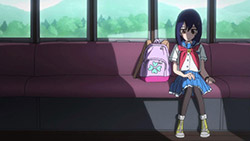 |
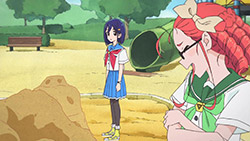 |
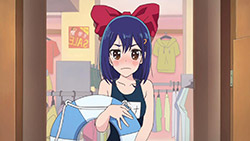 |

Only thing that matters is Papika 200% more tomboy in the preview.
Oh my. Oba-chan actually managed to say the title for the next episode in the preview. She’s the first person to accomplish that.
so did headphones girl
Just when I wanted to know more about painter-senpai, this episode gives it to me beautifully. I loved it.
However, it does make me wonder: What does she have to do with Pure Illusion in the first place? Surely that wasn’t the product of some sort of hidden desire the girls had to know more about her. No, that was a section of Pure Illusion dedicated to give its clueless visitors a taste of her hidden backstory. Or perhaps the hidden backstory of a random individual they may have encountered during their recent time. It only makes her relation to Pure Illusion ever more obvious. Somehow, this episode integrated this simple yet endearing story into its not so simple narrative while making us ask more questions, and therefore staying true to itself. That’s really impressive.
Truly subjective in its nature. I will say that I think this episode had a lot of pieces to make something really impactful, and in concept, it had some really neat ideas. But I’m going to say this right here.
I absolutely despised how it was executed.
I come from a background where I’ve seen some disaster movies, and they do that thing where you see, say, a twister come by and it shows these characters, like kids and younger people, to really show “Hey, this is a bad thing because look at it affecting these characters you never met before.” It’s such a cheap pity tactic, and I hate whenever media implements that.
I’ll absolutely admit that the idea of someone having to deal with the idea of dementia is a sad one. But I couldn’t shake the idea that Cocona and Papika immediately bonded with this aunt-like character upon visiting this realm-within-a-realm. And once they lose their macguffin, finding out who Iro is takes their biggest priority, which makes me assume Salt doesn’t really care and is letting them do whatever. Which, if he shows a bigger plan that doesn’t revolve around the macguffins, that’d be fairly interesting.
I think it had a good idea with splitting Iro’s personalities into two halves, but I think they really wasted the potential of that idea, because outside of Papika overhearing those other older ladies saying that aunt-like character is strange for bringing in kids all the time, Cocona is really the only person who experiences almost all these other sad happenings. Sure, there is the part where she wants to “switch” with them, but it’s something they could have done more with, especially on Papika’s side.
Also, just a thing for me, but the running away when the aunt-like character forgets who Iro is a strong scene, but it just doesn’t have the same power if I see Cocona who is representing Iro doing that, and not actually…Iro. They really could have shown a scene where the aunt-like character did see her as Iro or something, because outside of the beginning where she’s all “I can’t paint my nails” and the end where she’s made peace with it, you never see her actual image so it came off to me as “I was feeling bad, but I’m all better now. Thanks for changing…my memory or the timeline or whatever.”
It has some really good ideas, and on paper, I’m into it, but I just couldn’t stand how any of it was executed, so I’m pretty prepared to be a lone Negative Nancy on this episode. Absolutely subjective, and I’m not going to tell people who like it to not like it.
Hmm, I see. Let me try to make a counterpoint, since I obviously enjoyed the episode immensely myself. Where to start? In order, I guess?
Interesting comparison to disaster movies. While it may seem like a cheap ‘pity tactic’ to whip out the children for use as victims, on the other hand it’s invariably the children who are hit first and hit hardest in times of upheaval, be it wars, be it natural disasters, or be it adults having their adult issues. If you can’t empathise with people you don’t know going through suffering then it’s a tough sell, but here it’s not even people we don’t know, but our protagonists, living out the life of one Iro-chan (which they start in the middle of; you’d notice that Iro and the old lady already knew each other from before we started observing them). And it’s not like Flip Flappers makes a great secret that Iro-chan is in fact tea-and-art-senpai (starting with showing her signature on her painting).
In any case, the point of the exercise seems to be that Iro-senpai’s childhood was one of two halves, one which is warm and happy and one which is… blue. Our magical girl duo have to actively resolve those two halves. Iro was always seeking escapism from the blue to the orange, and then when the orange got blue she ran again. She has to end the denial if she’s to confront her past mistake.
What did Papika and Cocona actually do for Iro-senpai? It’s hard to say, since there’s much we still don’t know, but it’s clear that they’ve made some sort of inner peace for her, even if by proxy. I’ve been thinking of it as similar to Inception, but I’m sure Flip Flappers will reveal more of the secrets of Pure Illusion as we go.
It truly is a tough sell, because it does plop you right in the middle of Iro’s life with this older lady and they’ve had a bond. And thing is, I also have a grandmother who’s been showing slight signs of dementia for the last 3-4 years. It’s a terrible thing, and it worries me. But thing is, I learned that it’s impossible for everyone to care about, well, everyone. I’m concerned about my grandma, and I don’t expect you or my neighbors or people online to grow concerned about her, because you don’t know her and I won’t force you to do that. It may be cold for me to say this, but I’ve seen charities and support to help out those kinds of things, I care for a lot of them, but I can’t care for all of them, it’s way too much stress on your body and spirit to handle. I’ve tried to, and I felt like absolute trash because it drains everything from morale to borderline will to live from you.
That’s why I personally see a problem that Cocona and Papika immediately bonding with the old lady, because they really care and get right into it, but with my personal experiences, I can’t do it with the same immediacy. I do know the main characters, but those character impressions show me signs of “We like and are invested this character and so should you” but that’s just not how it works for me in media ranging from anime to movies, and in very rare circumstances, my own life.
It’s also the idea that this show loves its symbolism way too much, to where I’m exhausted of what’s represents what and want something that’s typical, where by this point, I’m pretty sure this show really isn’t for me anymore lol. But I drew a line at the idea Cocona and Papika represent Iro’s halves and Iro herself never appears in the sequence, because it’s a visual stimulation thing. I can’t get invested in someone representing the halves of a character going through all this, without actually seeing how it actually affects…the character. To show her from the start being “I’m not so great” and at the end with “I’m better now” doesn’t strike me as a sense of good progression, especially since you don’t see how events unfold in-between for her, because she’s perfectly fine with it.
It’s like if you took the idea of Alien vs. Predator. However, the Predator has a human soldier for some reason, and it’s only the soldier who fights off the Alien. Sure, the human soldier is representing the Predator, but I’d rather see, well….Alien vs. Predator, I don’t want symbolism in that regard, especially if it showed the Predator watching TV in his chair and shrugs off the fight. That’d be more funny in that regard, but that’s another topic.
I’d also consider that by now, the “deep” symbolism of orange being happy and blue being not so is similar to people saying Shyamalan’s comparison are deep, when it’s mostly basic color theory, but I’d be complaining about people’s responses rather than criticizing the show in that regard. I’m really starting to feel like that video of the guy saying how his childhood was ruined when he saw his parents die in response to the guy who said his childhood was ruined when Michael Bay made Transformers, and I’m feeling like I’m really bringing the mood down.
But that’s my overly long response to why this episode doesn’t come off as good to me. Maybe I’m expecting or asking for the wrong thing from this show, and I’m absolutely down to admit I made an error in that regard. This show is its own thing, people like it, but not everyone will for similar or different reasons. I’ll probably still be checking out the show in a passive nature, but you guys are free to enjoy it on your own time, I’m not going to bring you down to my thinking it’s bad. Enjoy it to your heart’s content, I can’t take that away from you all. <3
Nothing unfolds ‘between’ for Iro-senpai, nor did Papika and Kokona form immediate bonds with the aunt… they were experiencing Iro’s bond, because at that moment they were Iro.
I’m 99% confident this happened within Iro’s subconscious mind, overwriting her memory with a return visit to the aunt and healing to her soul.
But there’s a slight chance that instance of Pure Illusion was a literal space-time overlap, with the girls basically riding along inside Iro’s mind in the past. Meaning that Kokona and Papika would have literally changed the past and thus preventing Iro Senpaixs lingering guilt.
Is it really a matter of Papika and Cocona immediately bonding with the old lady? They’re playing the role of Iro (hence the name of the episode), and Iro is the one who has the bond with the old lady, as interpreted in the Flip Flappers fashion.
So it seems to me that you’ve missed out on some things in this show, which is a shame, but then again I do love everything about this show. Including the symbolism. Perhaps especially the symbolism. There’s nothing wrong with symbolism being simple; in fact, it’s arguably best when simple. We start with the very clear juxtaposition between blue and orange, and then it’s from there that we can quibble about what it means.
If you’re not into all this stuff, then that’s fine and I can’t really change it anyway. I don’t get worked up when someone doesn’t like a show I do, I just fear that they’re missing out. If you’ve made an informed decision about this not being your cup of tea, then I’ll say no more.
It’s a portion of one factor, because this is something affecting Iro, the point of the whole episode. And she gets the littlest screentime, appearing at the start and end. It’s cool they experience something that affected her, but without some kind of appearance of her actually there, or even viewed as such by the old lady, it misses the mark entirely for me, because I’m basically witnessing someone else endure it and a footnote that says “Oh, this happened to Iro btw.” I find no satisfaction in that is all.
Maybe I did miss out on some things, I did read into interpretations and the like, like how each episode is very character-based, sometimes blatant or subtle, like episode 2 being something that takes place in that rabbit’s dream, it’s a good theory. Like that “young girl/old woman face” illusion in this world of, well, illusion, it’s a nice touch. But when it comes down to it, I have a hard time seeing it in the same high regards as those interpretations put it.
Maybe because there’s so much of it, that’s why it garners so much attention? But at the same time, it runs the risk of a “too many cooks in the kitchen” scenario, more doesn’t always equate to better. And if the story is weak, it comes off as a bit of a desperate grab to me. I wouldn’t say the story is weak here because…well, it hasn’t really elaborated on it. But I have a difficult time being won over with how they handle pacing stuff and how oversaturated with meanings it has.
But overall, I’m totally down to admit I’m just being cranky, people says it’s the best thing, but I just think it’s okay at best. It’s like how much The Nightmare Before Christmas kind of boomed onto the scene, and when people saw the movie for the first time, it was just okay. It’s not a brilliantly written movie in terms of dialogue or anything, but it has clever ideas and interesting setpieces. It just has this buildup for the greatest thing ever, and you just feel it was very competent. That might be a similar scenario here, but I’ll know if I stick around for it. Can’t make that if bigger, but bold works fine enough lol.
“hey do that thing where you see, say, a twister come by and it shows these characters, like kids and younger people, to really show “Hey, this is a bad thing because look at it affecting these characters you never met before.” It’s such a cheap pity tactic, and I hate whenever media implements that.”
im sorry but i genuinely fail to understand how that tactic is used cheaply in this episode or how
this is the tactic used at all. There are some things that are just inherently sad or catastrophic. It’s like saying that showing the strive of a guy who has a dissociation personality disorder is a cheap tactic used to feel bad for the character. The execution is what matters and i dont quite understand what you’re trying to get at about the execution of the material. Secondly, we see a lot of iro’s interaction through cocona because she herself has a grandma and cocona doesnt have parents; her whole life she has lived with her grandma. Besides, it takes away from the whole idea of cocona and papika tampering with reality if the audience is actually shown iroha and not the girls themselves. I see your criticisms, but in my opinion the reasoning behind them are not backed by how this ep uses its strengths incorrectly. But i guess this ep or this series just doesnt work for you and that’s ok
Because it introduces this old lady and by the way, she suffers from dementia and this is the first time we see her being involved with Cocona-and-Papika-guest-starring-as-Iro? That’s how it comes off to me.
And yeah, I saw a “lot” of Iro interacting with Cocona, especially how one of the episodes before this, Papika drags Cocona away from her before they really got to interact. That’s me not really liking Papika as a character, but another topic entirely.
Maybe it does take away the idea that Cocona and Papika are the ones tampering with reality, and on paper, it’s a good idea, but things on paper don’t always translate well to media in motion. Some movies have things that are thrown in, because as part of a formula for a potential hit, it works, but in viewing, it’s not always a hit. Sucker Punch is a movie that has wild and creative visuals, but it’s exhausting to watch because it’s nothing but spectacle after spectacle with some lines of dialogue thrown in. Just saying things can sound good, but execution is flawed. And as I said before, I don’t feel that sense of reward of Iro being changed when she does a 180 between the start and end of this episode. I don’t find a sense of joy in that because that’s what the whole thing leads to, and it’s nothing but a void experience to me. But yeah, I still admit I approached this with the wrong mindset and think this show is going too far with the symbolism, but other people can get into that, and I can realize I may not be of that crowd.
Different strokes after all!
And there’s difference between “deep” and “effective”. Like you said, color theory is some pretty basic shit. What this ep does with the colors however is integrate it effective through scene composition and animation directing to create moments of subtext, even when you can necessarily perceive what’s on the screen as being happy or being dreary. What ends up being deep about the color integration is not its use of blues and oranges to differentiate between happy and sad scenes. But how it ultimately enhances the subtext of the episode and creates a through-line for the narrative towards the end. The point when the color use becomes deep is when we realize that orange was happiness for iroha because it was the first color of nail polish her grandma introduced to her. Orange symbolized her coming into adulthood; her being accepted as an equal by her grandmother, her accepting that there was a future to her art.The orange nail polish towards the end acts sort of like the amourphous of that world. When the girls discover it, they are able to find redemption for iroha and correct her mistake. In the end, iroha is wearing orange nail polish; she has found that happiness again; the happiness to move on and accept that life is both happiness and sadness. It is that moment when the color allegory becomes “deep” (i honestly prefer cleverly; deep is so ambiguous). Notice at the same time when cocona and papika meet iroha, they are puzzled. Their journey altered reality. Pure illusion is starting to meld with reality more and more with each ep and the potential dangers become more and more abundant.
“The point when the color use becomes deep is when we realize that orange was happiness for iroha because it was the first color of nail polish her grandma introduced to her. Orange symbolized her coming into adulthood; her being accepted as an equal by her grandmother, her accepting that there was a future to her art.The orange nail polish towards the end acts sort of like the amourphous of that world.”
Uuuuuugh. I get where you’re coming from, and I really value the effort you put into that explanation. But man, this is really looking way too into it. Maybe the creators did think this through and put in all these bread crumbs for neat moments like that, but I feel like they could have made her nail polish black, and then people would say “The black represents the dark past that she had to endure.” At some point, everything just has to represent something, I find nothing but exhaustion with that approach, and ultimately, it gets stacked up to a point where I can’t really care about what it ultimately leads to.
It’s the same thing with the Matrix. People done analysis of that movie to death, even though there’s a line in there where a guy says to Neo “Hey, you’re my own personal Jesus.” There’s nothing deep about that, it’s as blatant as you can possibly be, but no, everything(!) actually equates to something and Neo being the one and it drives me nuts how much people went into that. Or people going nuts about Evangelion, even though the people behind it called it that just because they thought it was a cool word. But no, symbolism and whatnot. It’s just too much.
But I won’t stop you, you guys have a passion for that thing, and I don’t deem it unhealthy in the slightest. It’s just something I can’t get into, at least to the level everyone is getting into with this show lol.
” At some point, everything just has to represent something, I find nothing but exhaustion with that approach, and ultimately, it gets stacked up to a point where I can’t really care about what it ultimately leads to.”
Trust me i can understand the feeling of people looking too deep into things to the point were something super simple is overanalyzed (it gets annoying i know) but flip flappers hasnt asked you to interpret everything. Instead it gives you two layers in which you can enjoy every episode. This is the major difference between shows that pretentiously act all up for interpretation and shows that allow you to make interpretations without losing the essence of the show. Ep 2 of flip flappers can be enjoyed as a simple alice in wonderland type of adventure without reading into anything deeper than that. Ep 3 especially can be enjoyed as an action adventure and that’s it; no need to dive into it. Ep 4 is a stranded island ep and ep 5 is a B horror film. Flip flappers doesnt ask you to get all “hmmmm, i wonder what this all means”; however, the show cleverly integrates optical illusions as one of its easter eggs because of the fact that you can see the ep from a different angle. The show brings up the theme of umwelt through uexkull without throwing it in your face because its not trying to tell you that interpreting all the imagery is a necessity; only that it will enhance the experience if you do because all of this is pure visual storytelling at work. But hey, if it’s not your cup of tea it’s not your cup of tea, it’s cool; not much can be done about that
And no; if the nail polish was black, I dont think people would have got all intepretation-neeey if it didnt make sense in the grand scheme of things. There are apparent visual breadcrumbs laid out through the series for people to draw conclusions and this series has been doing that since ep 1. I bet most people didnt even think that the reason why water bubbles were present in the world where the girls were fighting yayaka in was because pure illusion seems to be derived from whats on the subsconscious level of the girl’s mind. Before the girls dove into pure illusion, cocona stares at the bubbles filling the room as papika’s nails get forcibly washed. Since the bubbles are on her mind, they show up in the pure illusion world which happens to be based on iroha’s painting which was also on cocona’s and papika’s mind. We see cocona turn to look at the bubbles as the camera lingers on them and later on, we see the end result. The viewer is not asked to notice that detail, but if you did, it get a bit more out the ep and enhance your understanding of what pure illusion may be. Symbolism does not make something automatically good, just like how having simple characters in a story doesnt stop it from being an impactful narrative. It’s all about how symbolism is used; what it does to enhance themes, characters, and emotions.
And yea, as much as i dug evangelion, there were points were i felt it jumped the shark. The final scene of the end of evangelion made me wish the whole series was tackled in that kind of subtlety rather than cramming two semesters worth of philosophy down our throats and calling it a character study or deep dialogue. Anywho that’s my rant. I feel like detachment to the series might be making you miss the forest for the trees (you criticize the girls being attached to the grandma instantly, but that would be like you criticizing two characters who start a story off as friends and care about each other. How is that a problem exactly from a storytelling standpoint, you what i mean?), but that’s absolutely ok. I think a conventional storytelling style would have benefited the accessibility and comfortability of this series. However, what we are getting right now works for me on so many levels that im glad this approach was taken just as much.
Totally agree with the points you made about things being on two layers. But I think it hits a point where if I’m supposed to be enamored by a scene because “They used orange on a scene for happiness,” that’s something people are really unnecessarily looking too much into.
I didn’t notice the bubbles, and I’ll say the idea with how they implemented that in various ways is a neat one. But I think I found myself distracted by the one part where Papika and Cocona get smashed through the floor into a seemingly deep abyss, then ten seconds later, Yayaka and co. follow them down there, and it’s a ten-foot drop onto this pillar and more steps on that pillar and I thought it was hilarious just how weird that follow-up is.
But that’s another big and slightly separate issue for me, I can see the cool ideas, some while I watch it and even more after seeing other people’s analysis. But that thing with the floor, and Salt not really caring about Papika and Cocona losing the macguffin, and those two deciding they’re interested in wondering who Iro is, and the immediate connection with the old lady, it’s paced in a way that as neat as those ideas are, it doesn’t excuse that I don’t enjoy those particular parts (except the floor one) and it takes me out of the experience. And the surplus of connections I’ve seen become borderline an attempt to disguise the fact that this story (or lack thereof) may not be that great. Which is fine if that’s your aim.
And in the two friends scenario, I’d imagine they’d do some casual talk, maybe have a particularly way they act around each other but no one else, especially know what each other’s name is, that kind of thing. But with the old lady, they don’t even know who Iro is, not even by the second time they enter the place again, but they’re fine hanging around the old lady and manage to act in the same exact manner as Iro. It doesn’t come off as natural to me. Which may be the point because dreams/alternate reality/what have you, but I really couldn’t like it.
Anyway, I’m starting to nag at this point lol but you make good points, I see what you’re getting at, and I’m glad you’re into it.
Imagine the love you had for a person. Imagine that love fade away. It hurts but the effort of making that love real, making it matter – is beautiful…
https://randomc.net/image/Flip%20Flappers/Flip%20Flappers%20-%2006%20-%20Large%2035.jpg
This needs more comments
This episode is by far the best this series has to offer so far.